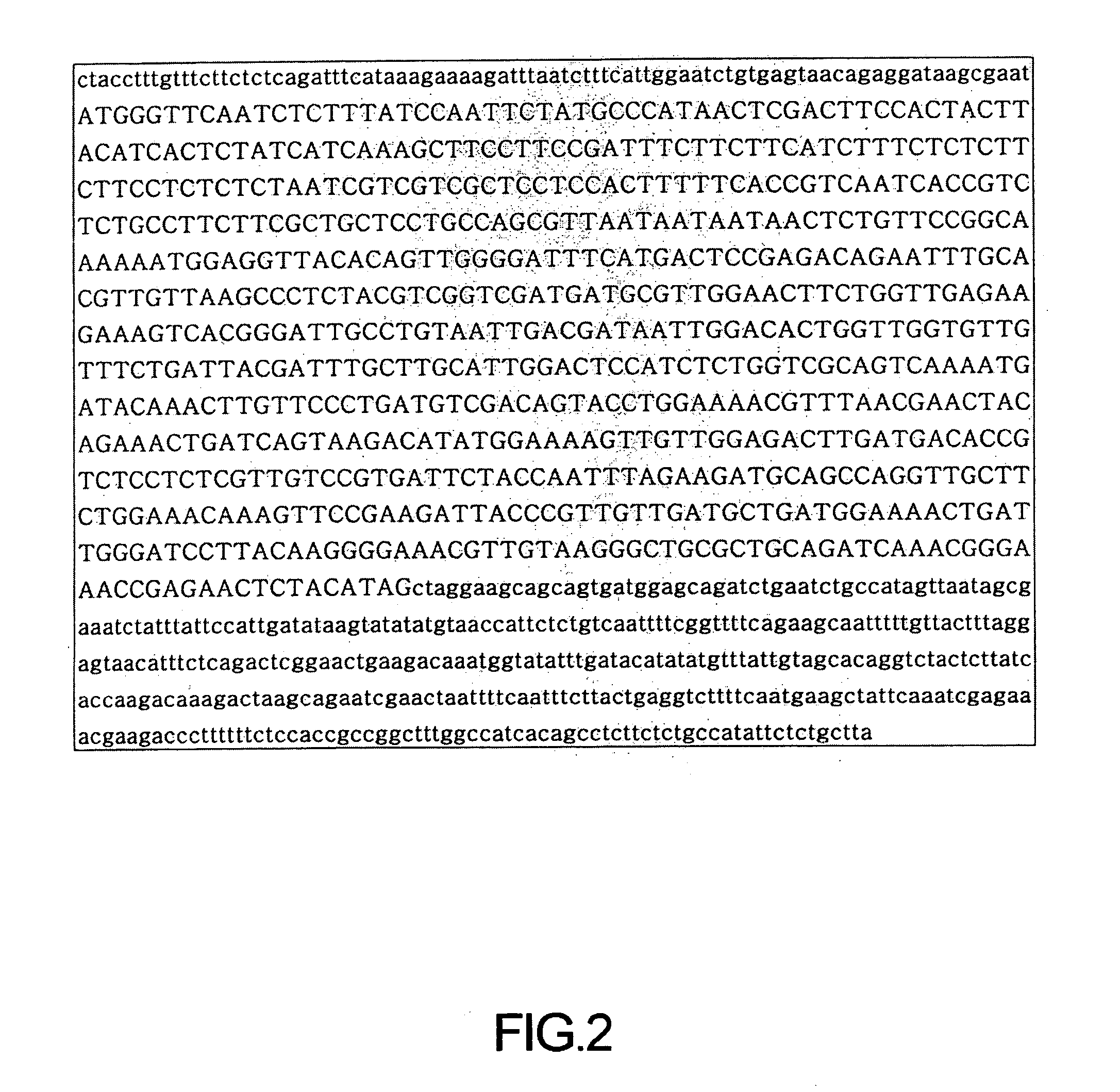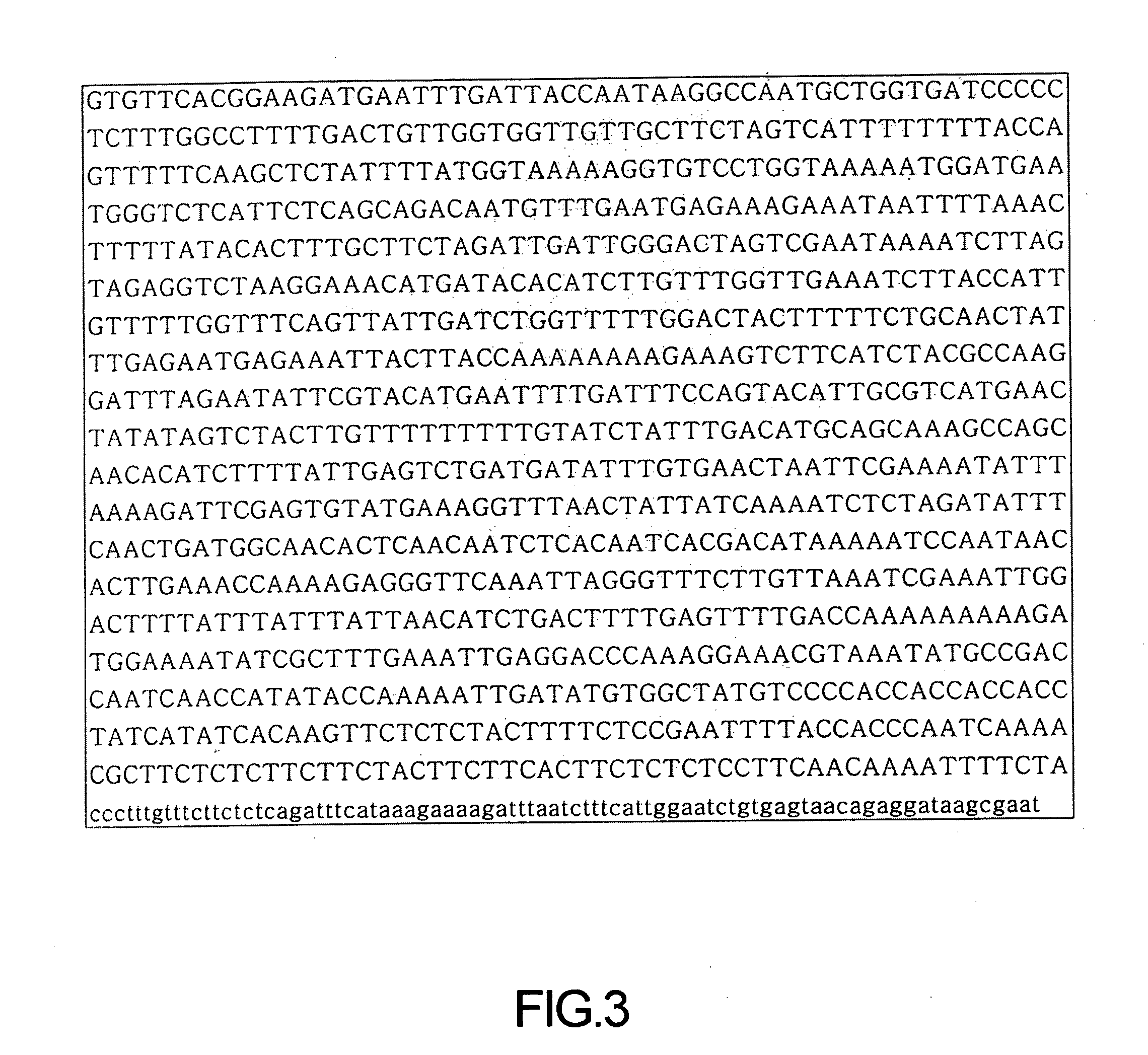Novel plant senescence-specific gene and its promoter
a plant senescence and promoter technology, applied in the field of new plant senescence-specific genes, can solve the problems of not taking into account the results obtained so far, inability of chemicals to be permanently anchored in plants, and a lot of difficulty in studying senescence-related genes
- Summary
- Abstract
- Description
- Claims
- Application Information
AI Technical Summary
Benefits of technology
Problems solved by technology
Method used
Image
Examples
example 1
Discovery of Novel Gene AtCDCP1
[0035] When Arabidopsis thaliana was treated with the stress-related plant hormone salicylic acid, over-expression was induced in a gene, which had not been previously known, and this unknown gene was called AtCDCP1.
[0036] A Blast search on TAIR (The Arabidopsis Information Resource) site found that the gene TAIR No. at4g34120 is in 100% homology with AtCDCP1.
example 2
RT-PCR of Target Gene (TAIR No. at4g34120)
[0037] To examine whether the open reading frame (ORF) of the AtCDCP1 gene identified on TAIR site is transcribed in practice in Arabidopsis thaliana, RT-PCR was performed.
[0038] For RT-PCR, cDNA was synthesized from the total RNA which was extracted from each tissue of Arabidopsis thalina (ecotype Columbia), e.g., flower, cauline leaves, rosette leaves, stem, and root, with the aid of the Nucleospin RNA plant kit (Macherey-Nagel).
[0039] A mixture of 4 μg of the total RNA, 10 mM each of dNTPs, 100 M random decamer, and nuclease-free water was incubated at 65° C. for 5 min, and then placed on ice. After the addition of an RT-PCR buffer, an RNase inhibitor and 0.1 M DTT, the mixture was further incubated at 42° C. for 2 min.
[0040] Then, the mixture was placed back on ice, followed by incubation with 200 units of a reverse transcriptase at 42° C. for 1 hr. Following inactivation at 70° C. for 15 min, the reverse transcription product was us...
example 3
Identification of the Promoter for Senescence-Specific Gene (TAIR No. at4g34120)
[0043] The promoter of the target gene (at4g34120) was assumed to correspond to the 1,094 base pairs which span from the 3′UTR (untranslated region) of the gene at4g341 10, just upstream of the AtCDCP1 gene (at4g34120), to the start codon (ATG) of the target gene (at4g34120).
[0044] First, genomic DNA (gDNA) was extracted from Arabidopsis thaliana. A couple of primers, represented by SEQ ID NOS: 5 and 6, were designed to each have HindIII at the 5′ terminus and BamHI at the 3′ terminus (see Table 2). Using a DNA polymerase (pyrobest, TAKARA) having proofreading activity, the putative promoter region was amplified in cooperation with the primers, with the gDNA serving as a template. PCR amplification was performed using Gene Amp® PCR System 2700 (Perkin Elmer, USA) in a touchdown PCR manner in which thermal cycling conditions were as follows: 95° C., 2 min, followed by 5 cycles of 95° C., 40 sec; anneali...
PUM
 Login to View More
Login to View More Abstract
Description
Claims
Application Information
 Login to View More
Login to View More - R&D
- Intellectual Property
- Life Sciences
- Materials
- Tech Scout
- Unparalleled Data Quality
- Higher Quality Content
- 60% Fewer Hallucinations
Browse by: Latest US Patents, China's latest patents, Technical Efficacy Thesaurus, Application Domain, Technology Topic, Popular Technical Reports.
© 2025 PatSnap. All rights reserved.Legal|Privacy policy|Modern Slavery Act Transparency Statement|Sitemap|About US| Contact US: help@patsnap.com



